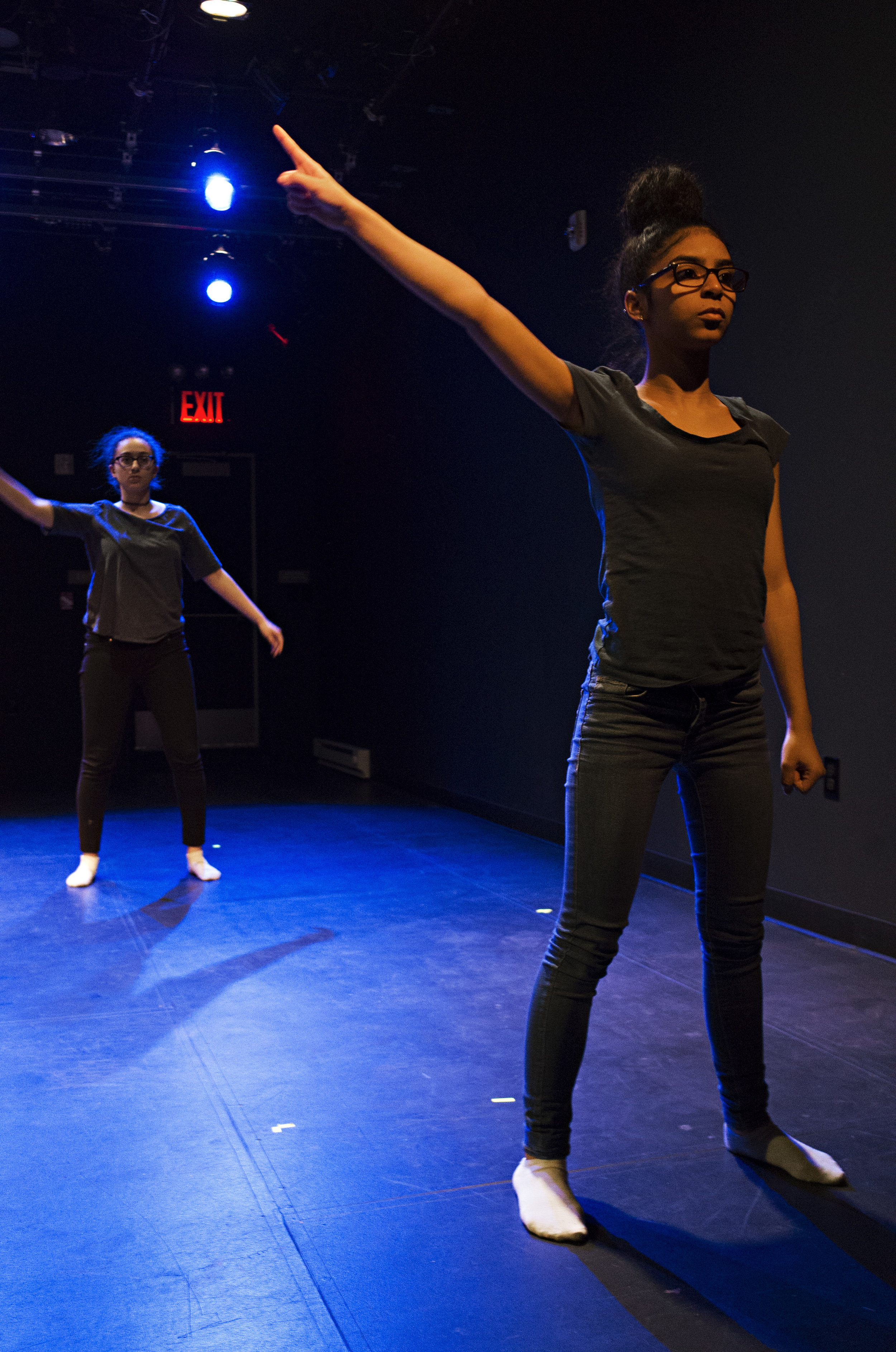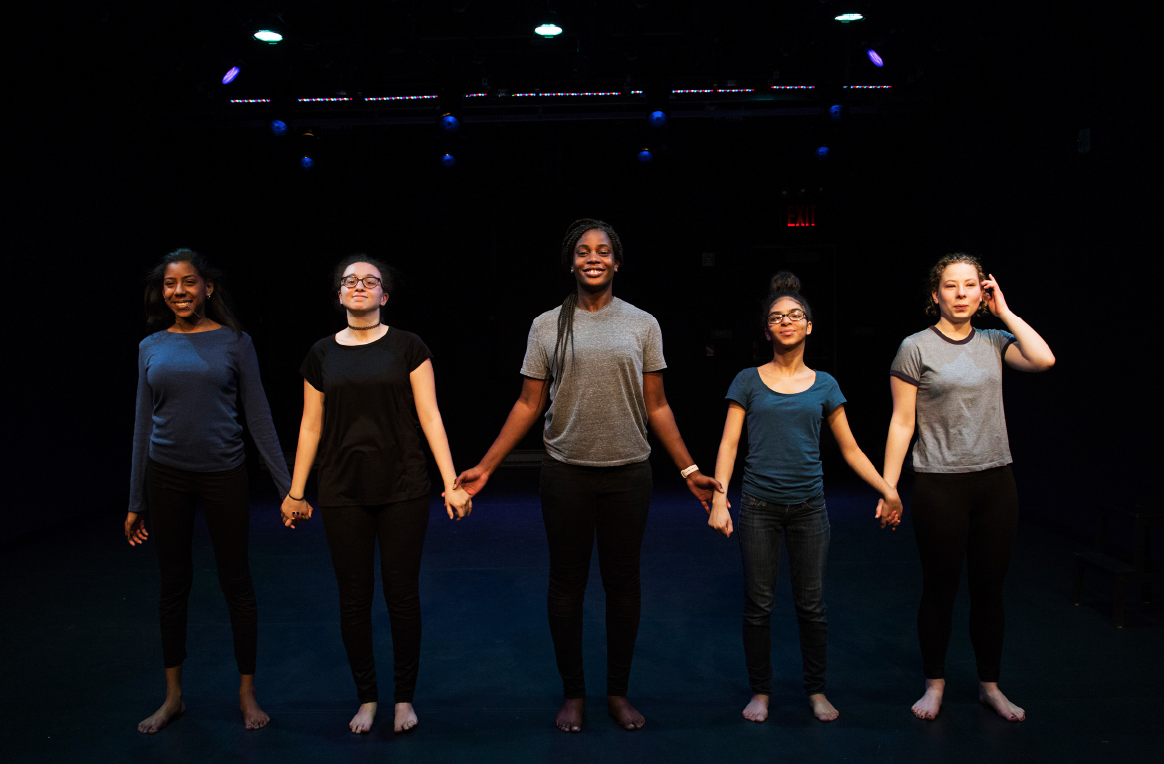The Little Rock Project
As part of an independent study during grad school, I had the opportunity to collaborate with the non-profit organization, Downtown Art (DTA) (located on the Fourth Arts Block in the Lower East Side) on their programming for teens from October 2016 through April 2017. As part of the collaboration, another NYU graduate student and I worked as project assistants on an ensemble theatre piece titled "THE LITTLE ROCK PROJECT" about the story of African American struggle to secure full rights to an education. The project was created from oral histories and first hand accounts.
As a project assistant I attended weekly rehearsals, participated in discussions on the script and themes of the project, got to know the Director and her vision/methodology, cultivated relationships with the company members, and participated in community outreach and organizing events in the Lower East Side.
I’ll be sharing the many reflections, observations, and notes taken during my independent study with DTA below. More specifically details on how the ensemble theatre company and script were created as well as all the effort that went into creating the project.
THE LITTLE ROCK PROJECT
Resident Ensemble Theatre Group: The Little Rock Project was performed by a group of 5 girls, ages 15-17 from different high schools and boroughs in the city. They met twice a week after school starting in October until the opening night of performance in April. Occasionally, they had a third session a week on Saturdays. There were some field trips to other youth groups for open rehearsals as well as cultural organizing workshops.
Performed by Rafaella Binder-Gavito, Sanique Delpesche, Sierra Johns, Carmen Camacho Luther, and Mariah Rivera.
Directed by Ryan Gilliam
Lighting Design by Antigona Gonzalez and Miguel Valderrama
Stage Manager Dakota Scott
Assistants to the Director Brenda Hung and Daniela Mekler
*All dress rehearsal images courtesy of Daniela Mekler
Forming a company, building a team, and setting the space
Fostering a strong sense of community was an important aspect of forming the company. Each company member was accountable to themselves, each other, the director, and to the project. It was a group collective, with each member having an equal stake and a level of commitment in the project.
Story Circles
Story circles are small groupings of people sitting in a circle and sharing stories. It is a platform for the making of culture that allows participants to share experiences in their own words and counter the top-down approach to arts and culture. They create a space to develop a practice of reflection, deep listening, and sharing.
"I feel like as an ensemble, we have to love, support, and motivate one another. Once you have love, support, and you motivate each other, it's going to make you stronger as an ensemble and help build trust. It will help you try your best and put your best foot forward in the rehearsal process and to getting the project done." -Mariah, company member
Reflection
Constant reflection throughout the process of the project was an integral part of prepping for the performance. In order to connect and embody the script, the company members didn't just memorize the script that they were given, but they deeply reflected on the material while making direct connections to their lives.
We would participate in ensemble building activities that engaged with the themes of the story of Little Rock as well as current events tied to themes of equality.
Image from “World we have” “World we want” “How do we get there?” exercise.
Since the focus of the piece was on education, the company members were encouraged to find ways they related personally to the script as well as coming up with their own ideas about what it means to have an education today and what they would do differently. They were also asked to identify how racism and segregation exists today.
“School should be more preparation for life. What's practical and what can be used in career and business. I like school, but I want to be taught something that I can relate to and that I am going to remember when I am 85. I want a connection.” -Sanique, company member
Using oral histories
The script was largely created from oral histories. Oral histories are first hand accounts and personal narratives that tell us more about experience and feeling, which in turn helps us to challenge the notion of traditional historic accounts we know as official written histories. These individual and shared memories provide a way of looking at history to better understand our present social circumstances.
When telling stories of moments in history, Ryan made it a priority to tell those stories in the words of the people who were there, the people who lived through them. To do so required a lot of reading and research, using excerpts from oral histories when available, as well as newspaper or television interviews, biographies, letters, and other first hand sources. The script aimed to tell the complete story, with multiple viewpoints, using only first hand accounts. However, it often becomes necessary to write brief lines of additional information to provide context.
For THE LITTLE ROCK PROJECT, an opening section was added to describe the denial of education to African Americans during slavery, the hunger for education following Emancipation, and the rationales used by white Americans to deny African Americans schooling. To tell this story historical figures like Thomas Jefferson and Frederick Douglas were quoted, as well as former slaves, Southern politicians, and Northern observers. The second section begins with excerpts from the Supreme Court's landmark ruling declaring that segregated schools were "inherently unequal." Gradually, the story winds its way to the specifics of the battle in Little Rock and the experiences of nine African American high school students and their white peers.
“The script served more than a record of the past -- it brought forward themes for discussion related to events in the present. THE LITTLE ROCK PROJECT is about school and community segregation, but it is also about how we decide to act when we witness conflict and abuse.” -Ryan, Director
Acting, staging and movement
Acting, staging, and movement are all intertwined and equally important. After each week of rehearsal, the girls started to embody the script. It took a great deal of patience and work to reach the point where they started to understand and feel comfortable with the material. Reading and assigning each piece of the script was the first step. The script was created and handed out in parts - from the history of slavery in the 1700's to the Supreme Court ruling in 1954, leading up to the experiences of the Little Rock Nine.
There was usually a round table reading of the script followed by a discussion of what's actually taking place within the lines. Questions are asked followed by reflection. The process was never rushed. As the girls familiarized themselves with the content of the script, they started to express each role with imagination by using their voice and bodies.
The company members were asked to come up with their own series of 4 or 8 count abstract movements for the project. This opened up space for imagination, ownership, and collaboration. Movement took on meaning as each poetic movement unfolded on stage. Trusting in the process of theater iwasan important factor and could be seen through the series of repetitions of each movement.
“There is an important balance. . . how do we create something that is both simple and at the same time profound? How do we keep this tension that is holding the narrative together and yet be spare and thoughtful?” -Ryan, director
“I think that putting different things into art and movement, it helps you with a lot because, like using your body to tell stories, I think that it's really awesome. I find that really inspiring because you don't necessarily have to have words to tell a story, I feel like if we really wanted to we could kind of tell the whole play through movement.” -Sierra, company member
Performance and discussion
There were a total of four performances in April followed by an open discussion with homemade cakes and desserts. Each performance was intimate in size and I found that with this intimacy, it forces you to be present and allows you to make personal connections with the material.
Audience Reflections:
“I thought the students were remarkably poised and engaged. The play was an effective way to teach history and it was beautifully done.”
“I just want to say thank you. I think there were so many aspects of it to me that was so moving and partly because of the way you performed it and brought that historical moment to life but also on a personal level. I’m originally from Sudan, but I’ve lived here most of my life and I was recently detained at JFK airport under the executive order and I’ve lived here most of my life and I was recently detained at JFK airport under the executive order and I’ve been speaking out about it… I want to say thank you because that message that silence is complicity and the importance of speaking out in this historical moment is really important.”
“I learned a lot from the performance, especially about the Little Rock Nine. I had no idea there was so much to the story. It makes you think and question just how much you actually learn in school about specific topics.”
“I really appreciated the intimacy of the play and how close we were to all of you. It really forced me to be present and feel the emotions of the characters. A couple of times I made eye contact with some of you and that was really powerful.”
“I think there is a huge potential for this play to be used as a teaching tool in school settings. Even when history curricula do cover narratives like this, it can often feel so distant and forgettable. I know if I had seen this performance instead of reading about the Little Rock Nine in a textbook, I would have remembered the story and its implications more viscerally and more permanently.”
I am so grateful to have had this opportunity to work with Ryan and the girls on this project. Getting to know the teen company members has been a privilege and each of them are young activists who are incredibly articulate, mature, and unique. Their work and the project were truly inspiring and motivating.
Reflecting back on my own experience as a teenager, I only wish that I had found an opportunity like this that would allow me to use my voice creatively in such a safe and supportive setting. My time there has reaffirmed for me how the arts can unlock so much from within and create new possibilities.
THE LITTLE ROCK PROJECT served more than a record of the past as it encourages us to reflect on our own actions. How do we decide to act when we witness injustice, conflict, and abuse?
Downtown Art has a history of working with young artists and community members to create performance, festivals, and other special events. Through their art and collaborations, they seek to build a community of engagement, creativity, and mutual support.










